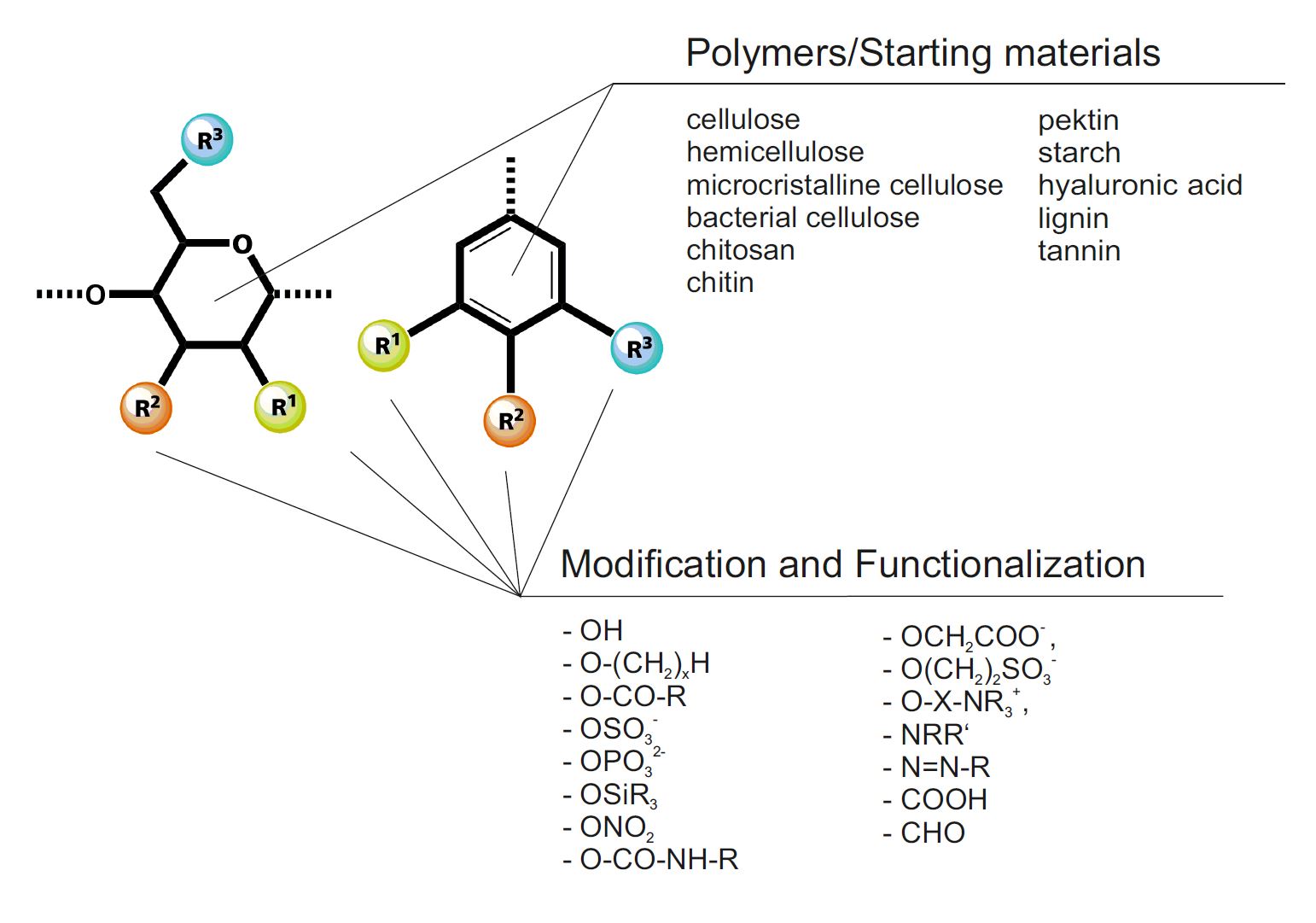Biobased polymers for your application!
We modify the physical, chemical, or biological properties of natural polymers through tailored chemical modification. For example, we make them more thermally processable, more soluble, more dispersible or optimize their morphology for special applications.
The resulting derivatives can be used both in mass products such as building materials, detergents, or paper, as well as in highly refined specialty products. Special derivatives serve as carrier materials for enzymes and active ingredients in medicine, biotechnology, and pharmaceuticals, among others.
What would you like to optimize?

